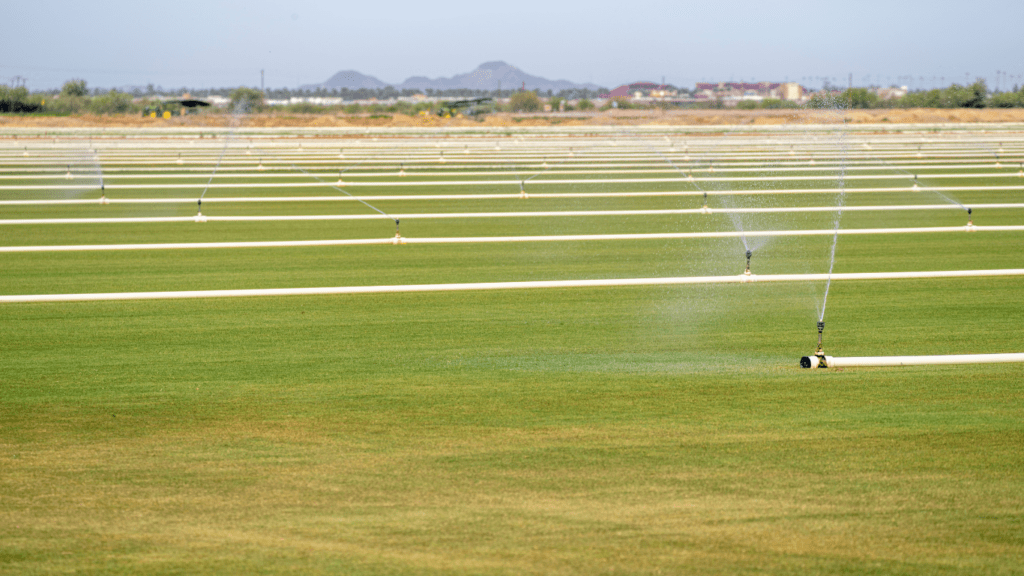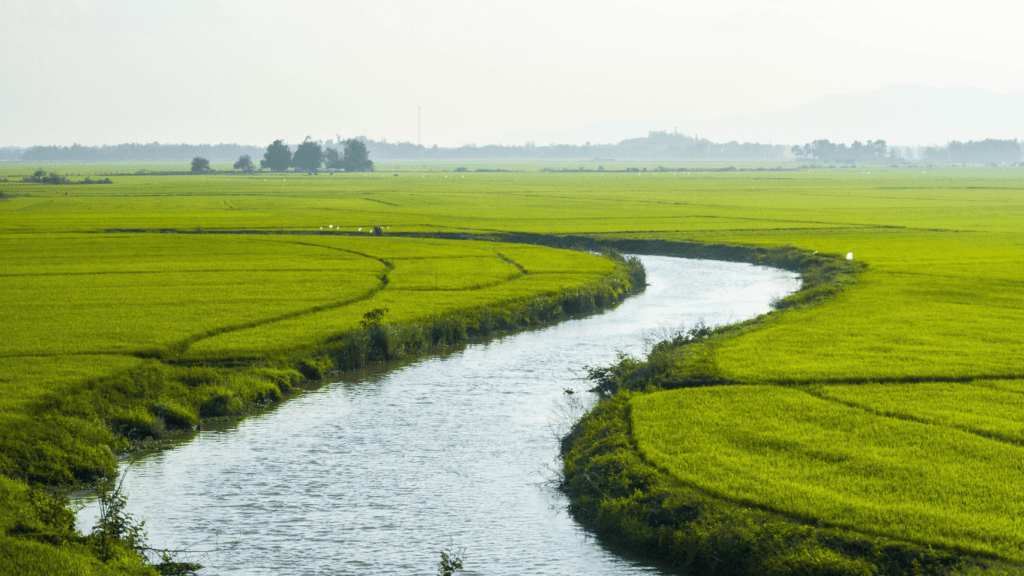Importance of Water Management in Agriculture
Effective water management in agriculture is crucial for ensuring crop productivity and food security. Efficient use of water enhances soil health, prevents waterlogging, and reduces salinity issues. In areas prone to drought, water management techniques like drip irrigation and rainwater harvesting conserve resources and improve resilience.
More than 70% of freshwater withdrawals globally go to agriculture, according to the Food and Agriculture Organization (FAO). Better water management helps optimize this usage, maximizing crop yields and minimizing waste. Farmers implementing precision irrigation systems, for example, can reduce water usage by up to 50%.
Moreover, addressing water quality is essential. Contaminated water can spread diseases and reduce crop health. Implementing proper filtration and purification methods ensures safe irrigation, leading to healthier crops. Reduced runoff and efficient water use also mitigate environmental impacts, promoting sustainability.
Climate change exacerbates water scarcity, making water management even more pivotal. Adaptation strategies like drought-resistant crop varieties and improved irrigation infrastructure are vital for reducing vulnerability. Investing in these innovations not only secures crops but also supports a sustainable future.
The importance of water management in agriculture can’t be overstated. It boosts productivity, conserves resources, and enhances sustainability, forming the backbone of resilient farming practices.
Traditional Water Management Techniques
Innovation in water management isn’t new. Farmers have long relied on traditional methods to manage water effectively.
Irrigation Systems
Early irrigation systems shaped agricultural practices. Surface irrigation, where water flows over land by gravity, was among the first methods used. Variants include furrow, basin, and border irrigation. Farmers historically employed earthen canals and levees to direct water to crops.
Though simple, it required considerable labor for maintenance. In many regions, communal irrigation systems formed, involving the allocation of water shares and coordinated efforts to manage supply.
Water Harvesting
Collecting and storing rainwater has been key for dry regions. Farmers constructed underground cisterns and surface reservoirs to capture runoff during the rainy season.
Techniques like terracing and contour plowing helped slow water flow, increasing absorption and reducing soil erosion. Rooftop harvesting allowed water to be funneled into storage tanks. Traditional methods like these provided vital water reserves for irrigation during dry periods, ensuring crops received necessary hydration despite irregular rainfall.
Modern Innovations in Water Management
Modern water management techniques have revolutionized agriculture by enhancing efficiency and sustainability. These innovations are crucial for meeting the growing demands of food production while conserving water resources.
Drip Irrigation Technology

Drip irrigation technology delivers water directly to the roots of plants using a network of valves, pipes, and emitters. This method minimizes evaporation loss and reduces water use by up to 50%, compared to traditional irrigation methods. For example, many farmers in arid regions have successfully adopted this technology to improve crop yields and reduce water consumption.
Precision Agriculture
Precision agriculture uses technology like GPS, remote sensing, and IoT devices to monitor and manage crop fields more effectively. These tools allow farmers to apply water, fertilizers, and pesticides precisely where needed, optimizing resource use and minimizing waste. For instance, soil moisture sensors can provide real-time data, enabling more accurate irrigation schedules.
Solar-Powered Pumps
Solar-powered pumps harness solar energy to provide a reliable and sustainable water source for irrigation. They are especially beneficial in remote areas with limited access to electricity.
By reducing dependence on fossil fuels, these pumps lower operational costs and environmental impact. In regions with abundant sunlight, farmers can use solar-powered pumps to maintain a consistent water supply, ensuring crop health even during dry spells.
Modern innovations in water management, such as:
- drip irrigation technology
- precision agriculture
- solar-powered pumps
play a crucial role in enhancing agricultural productivity and sustainability.
Sustainable Practices
Efficient water management in agriculture relies heavily on sustainable practices. These practices help conserve water resources, promote environmental health, and ensure long-term agricultural productivity.
Rainwater Harvesting
Rainwater harvesting involves collecting and storing rain for agricultural use. It’s particularly beneficial in regions with irregular rainfall.
By capturing rainwater from roofs, fields, and other surfaces, farmers can create a reliable water supply for irrigation during dry spells. Techniques involve using storage tanks, ponds, and underground reservoirs. This method reduces dependency on eroded water sources and helps recharge groundwater.
Water Recycling
Water recycling entails reusing water from various sources within the agricultural context. Treated wastewater from domestic or industrial processes can be repurposed for irrigation.
This practice decreases the demand for freshwater sources. Systems like constructed wetlands and biofilters treat and purify water, ensuring it’s safe for agricultural use. Recycling water also enhances soil health by applying nutrient-rich treated wastewater, promoting sustainable crop production.
Case Studies of Successful Implementations
This section delves into real-world examples of how innovative water management practices boost agricultural productivity and sustainability.
Region-Specific Innovations
Several regions have implemented unique water management techniques to address local challenges.
- Israel: Implemented advanced drip irrigation systems that maximize water efficiency and crop yield. By delivering water directly to plant roots, usage is cut drastically, which fits the arid climate perfectly.
- India: Adopted rainwater harvesting in Rajasthan to mitigate irregular rainfall and water scarcity. Communities constructed tanks and ponds to collect monsoon rain, ensuring water availability for agriculture year-round.
- California, USA: Employed smart irrigation systems and IoT devices. Farms use sensors and automated systems to monitor soil moisture and weather conditions, applying water precisely when needed, thus reducing waste.
Economic and Environmental Benefits
Innovative water management practices provide substantial economic and environmental benefits.
- Cost Savings: Farmers experience reduced costs for water procurement and energy with the use of energy-efficient pumps and precision irrigation systems. An example is solar-powered pumps used across Africa, which minimize energy expenses while providing consistent water supply.
- Improved Crop Yields: Practices like drip irrigation ensure more efficient water use and prioritize plant health, leading to higher crop yields. Precision irrigation in Australian vineyards has resulted in a 20% yield increase.
- Environmental Protection: Effective water management reduces over-extraction of freshwater sources and prevents soil degradation. In Spain, water recycling in citrus farms has reduced the strain on local aquifers and improved soil quality, showcasing the ecological advantages.
These case studies demonstrate the tangible benefits of innovative water management practices in diverse agricultural contexts, confirming the critical role they play in modern agriculture.
Challenges and Future Directions
Water management in agriculture faces several obstacles despite recent advancements. Addressing these challenges can lead to greater efficiencies and sustainability.
Technological Barriers
Technological adoption in agriculture isn’t uniform. Farmers in developing countries lack access to advanced tools. High costs deter many from investing in new technologies.
Compatibility issues between traditional methods and modern systems create hurdles. For instance, integrating IoT devices with existing irrigation systems requires specialized knowledge. The lack of standardization hampers the seamless implementation of technology.
Policy and Funding Requirements
Efficient water management demands supportive policies and adequate funding. Current policies do not always incentivize the adoption of sustainable practices.
Many farmers receive insufficient subsidies for upgrading their systems. Furthermore, funding for research and innovation in water management remains limited. Policymakers must prioritize resource allocation to facilitate technological integration and infrastructure development. For example, grants and low-interest loans can assist farmers in acquiring modern irrigation tools.



